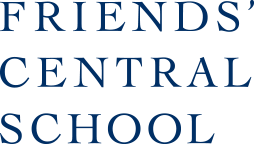A solid foundation in math during elementary school is crucial for future academic success. Traditional math instruction often emphasizes rote memorization, but research shows that students thrive when they explore mathematical ideas through real-world contexts.

Beyond Memorization: Conceptual Understanding
At Friends’ Central School, "Our curriculum focuses on exploring the meaning behind the math so that students can fully understand what they are computing, rather than simply memorizing an algorithm,” explained Susan Clough, Friends' Central's Lower School Math Specialist.
We use the Contexts for Learning Mathematics curriculum, a math workshop model which builds deep understanding by guiding students through hands-on, collaborative problem-solving activities rooted in a specific math "context" or story/scenario. Students explore the problem independently with a partner.
“Starting in second grade, students, sketch out their ideas, and they make what we call a ‘poster,’ which is basically a visual using diagrams, charts, tables, number lines to explain their math thinking on paper. This is similar to mathematical proofs that come later in advanced math classes for older students," shared Clough.
By the time students complete Lower School math, they are more than ready for the next tier of learning.
Classroom discussions, including "math congress," encourage students to analyze different problem-solving strategies and articulate their reasoning, asking, "What’s happening here mathematically?"
A Developmentally Appropriate Approach
Traditional algorithms are introduced intentionally in third grade and beyond, once students have developed a strong conceptual foundation. This approach may be different from what many parents experienced themselves in school, but it is designed to help students build a more flexible and lasting understanding of mathematics. Friends’ Central’s program teaches multiple strategies for reaching an answer, ensuring a deeper grasp of mathematical relationships.
For example, subtraction might begin with an "open number line," where students count the "hops" between numbers, reinforcing their understanding of place value and numerical relationships. First and second graders use this approach to break down subtraction problems before algorithms are introduced in third grade. By the time students learn traditional long division or multi-step multiplication, they already have a deep conceptual understanding, allowing them to apply these methods effectively. This approach results in flexible, fluent thinkers who can tackle complex problems with confidence.

Challenging and Supporting Every Learner
Friends’ Central’s individualized approach ensures that every student is appropriately challenged and supported. Small-group instruction allows teachers to tailor lessons to each learner’s needs. Advanced students engage in enrichment activities such as converting fractions, working with ratios, and exploring unit rates earlier than their peers.
Teachers hold daily one-on-one “conferences” with student pairs to assess progress and guide learning. Additionally, a dedicated math specialist moves between grade levels, providing extra support for individuals and small groups as needed. This ensures that students who need reinforcement receive targeted instruction, while advanced learners are encouraged to explore more complex mathematical concepts.
For students who need additional support, learning specialists provide targeted reinforcement, helping them strengthen essential skills and strategies. Whether working on foundational number sense or exploring pre-algebraic concepts, each child receives the guidance they need to thrive.
Preparing for Advanced Math in Middle and High School
The benefits of this strong foundation in elementary school clearly support learning in middle and high school. At Friends' Central, students transition seamlessly into higher-level mathematics. By sixth grade, many qualify for advanced math courses, demonstrating their ability to think critically and apply problem-solving strategies.
“What we’re finding now that we’re four years into this program is that students’ math thinking ability and their ability to transition skills from one topic to the next has just exploded,” said Clough.
By high school, students are well-prepared for rigorous coursework, including algebra, calculus, linear algebra, and multivariable calculus. Many graduates complete at least one year of calculus, ensuring they are equipped for future academic challenges.
Why Friends' Central’s Approach Works
At Friends’ Central, math is more than numbers on a page; it’s a way of thinking. Through hands-on activities, real-world applications, and collaborative problem-solving, students develop a deep understanding of mathematical concepts.
If you're looking for a school that fosters mathematical confidence and prepares students for future academic challenges, Friends’ Central may be the right fit. Our innovative, student-centered approach ensures that every learner is ready to go further.

